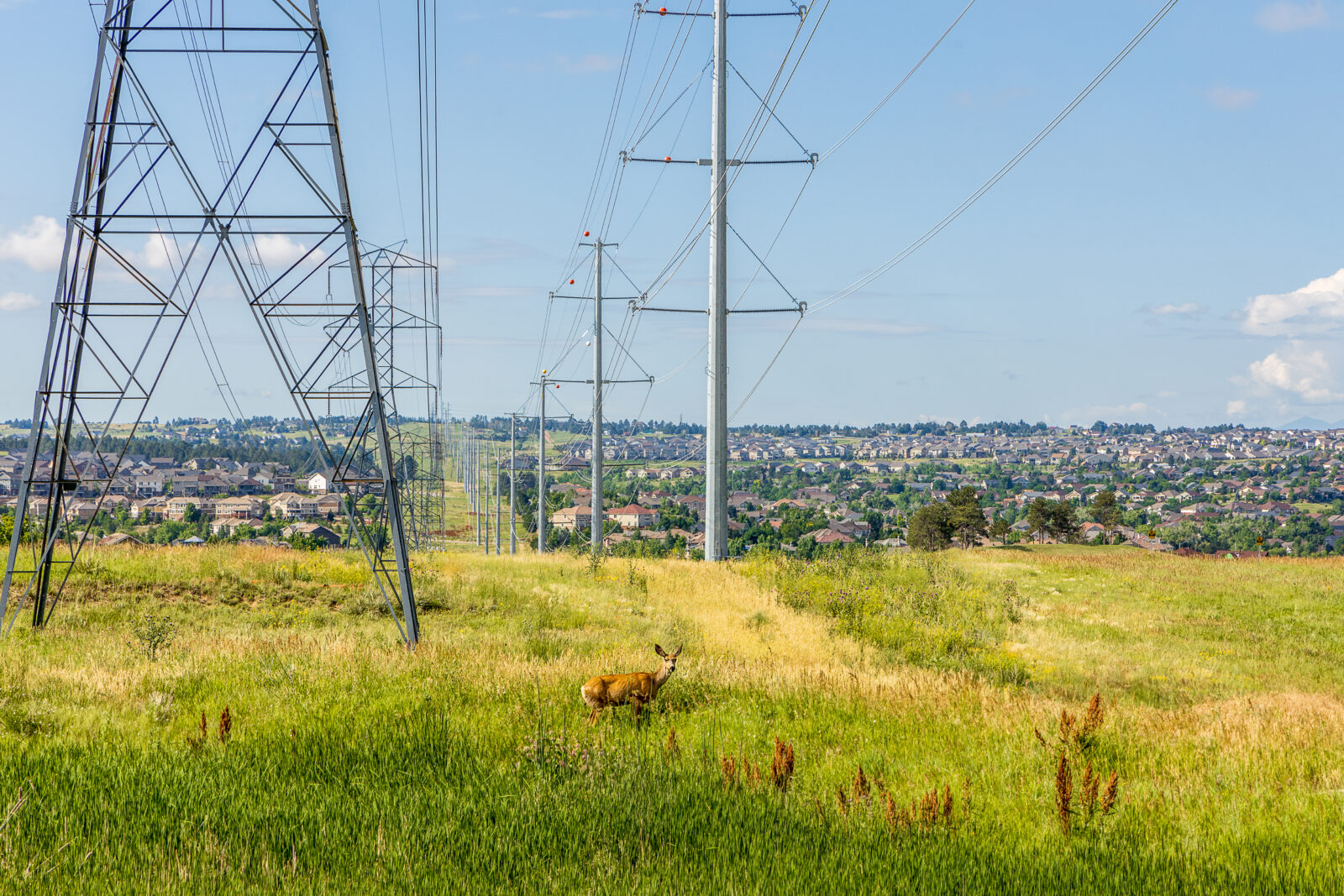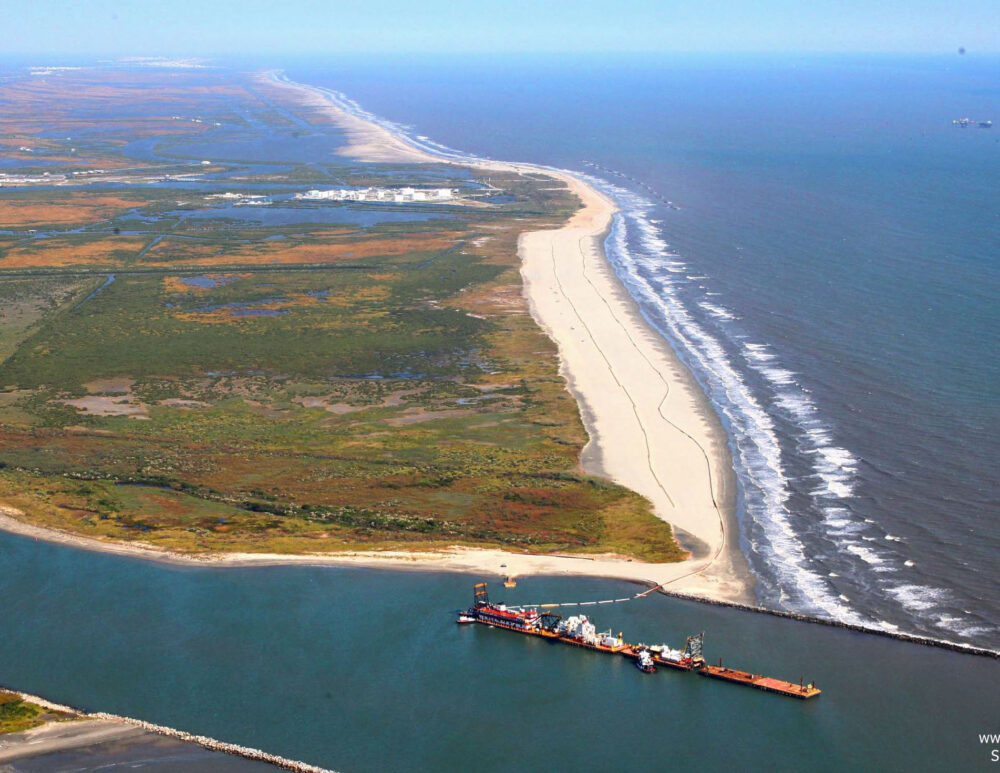We have much more to do and your continued support is needed now more than ever.
The 5 Pillars of Responsible & Just Clean Energy Transmission

Electricity allows our communities to function; clean electricity allows our communities to thrive. Shifting the electric grid to clean forms like wind and solar will require a massive buildout of infrastructure, a modern, resilient energy grid—and transmission. The choices we implement in the next 10 years will make or break our efforts to reach net-zero greenhouse gas emissions by mid-century. Net-zero greenhouse gas emissions will ensure we avoid the most catastrophic climate impacts on water security, food supply, human health, wildlife populations, and more.
To meet our climate goals—and provide affordable and reliable clean energy to our communities—electric transmission capacity must more than double within this decade. The infrastructure we develop must be resilient to increasing severe weather, but there will be tradeoffs. Development will have significant, potential impacts on our lands, wildlife, cultural resources, and more. The National Wildlife Federation is committed to accelerating America’s clean energy grid buildout and recently released a policy platform with recommendations on how to protect people and wildlife through responsible investments.
Let’s start with what transmission is.
Responsible investments in energy transmission:
1. Minimizes impact to wildlife habitat in siting transmission infrastructure while prioritizing already disturbed areas
Wildlife corridors and connectivity allow species to move between habitats, particularly during seasonal migrations and in response to climate change. Preserving and increasing habitat connectivity and wildlife corridors is an effective climate adaptation strategy for managing biodiversity. Maintaining this connectivity in nature also benefits people by reducing flood risk, mitigating extreme heat, preserving access to nature, and expanding hunting, fishing, and subsistence opportunities.
Where possible, new transmission lines should be placed alongside existing, lower-capacity powerlines or along roads and railroad tracks. Developers should also prioritize degraded lands like abandoned mines or former industrial sites—and they should seek to avoid building new lines where they will impact communities that are already experiencing environmental harms from other sources.

2. Centers and empowers local communities and Tribal Nations
Relying on fossil fuels disproportionately harms underserved and overly burdened communities. These communities are often subjected to high energy costs and unreliable power through rolling blackouts during extreme weather events. Expanding the transmission system will bring clean, affordable energy to these communities and address existing environmental health issues exacerbated by climate change. It can also create opportunities to own these investments and job opportunities that include local workforce training programs and hiring agreements.
Responsible investment in energy transmission requires that governments, project developers, and regulators build real, meaningful relationships with communities that not only listen to concerns but also honor the decisions they make about proposed projects.
3. Applies mitigation measures that conserve and restore ecosystems and wildlife habitat and populations
Identifying and avoiding certain critical areas are also a necessary mitigation tool. These critical areas include wildlife migration corridors, sensitive natural ecosystems, cultural heritage and archeological sites, and watershed and riparian areas important to migratory birds. Locating projects in already disturbed areas that do not require additional land clearing and do not overburden existing communities is a just practice. Incorporating Indigenous Knowledge and modeling and mapping tools should also be an integral part of project planning.

4. Applies proactive, interregional long-term planning that equitably invites collaboration among communities, state, regional, and federal stakeholders, regulators, and tribes
The power grid is a national security asset. It provides electricity to keep our homes warm during blizzards and cool during hot summers. The power grid is also the backbone of our society’s other infrastructure, allowing wastewater treatment plants to run, keeping our hospitals powered, and so much more. New transmission is important to reduce our reliance on traditional energy and will provide communities with access to renewable energy. However, improving existing projects will save customers money and improve the resiliency and reliability of the grid, especially during extreme weather events. Both must occur simultaneously.
5. Responsible transmission development maximizes coordination of decision makers
Each state has different procedures to follow for approving a transmission project, including different environmental siting criteria. Since transmission projects will affect biodiversity, natural resources, and wildlife habitat, coordination in mitigation is imperative. Notably, developers must collaboratively and proactively design projects with conservation advocates, their partners and local communities, wildlife scientists, and climate scientists, to ensure that stakeholders and subject matter experts can inform what this new landscape looks like.
Upgrade and buildout of an interconnected power grid that provides reliable, affordable renewable energy to all communities may be the greatest U.S. infrastructure accomplishment of the century. The current transmission needs represent an opportunity to demonstrate how the U.S. has learned from its history of injustices, conservation missteps, and convoluted administrative processes, and can move towards creating a future where everyone benefits.
Read more about our national policy recommendations for safe and responsible energy transmission infrastructure.





















